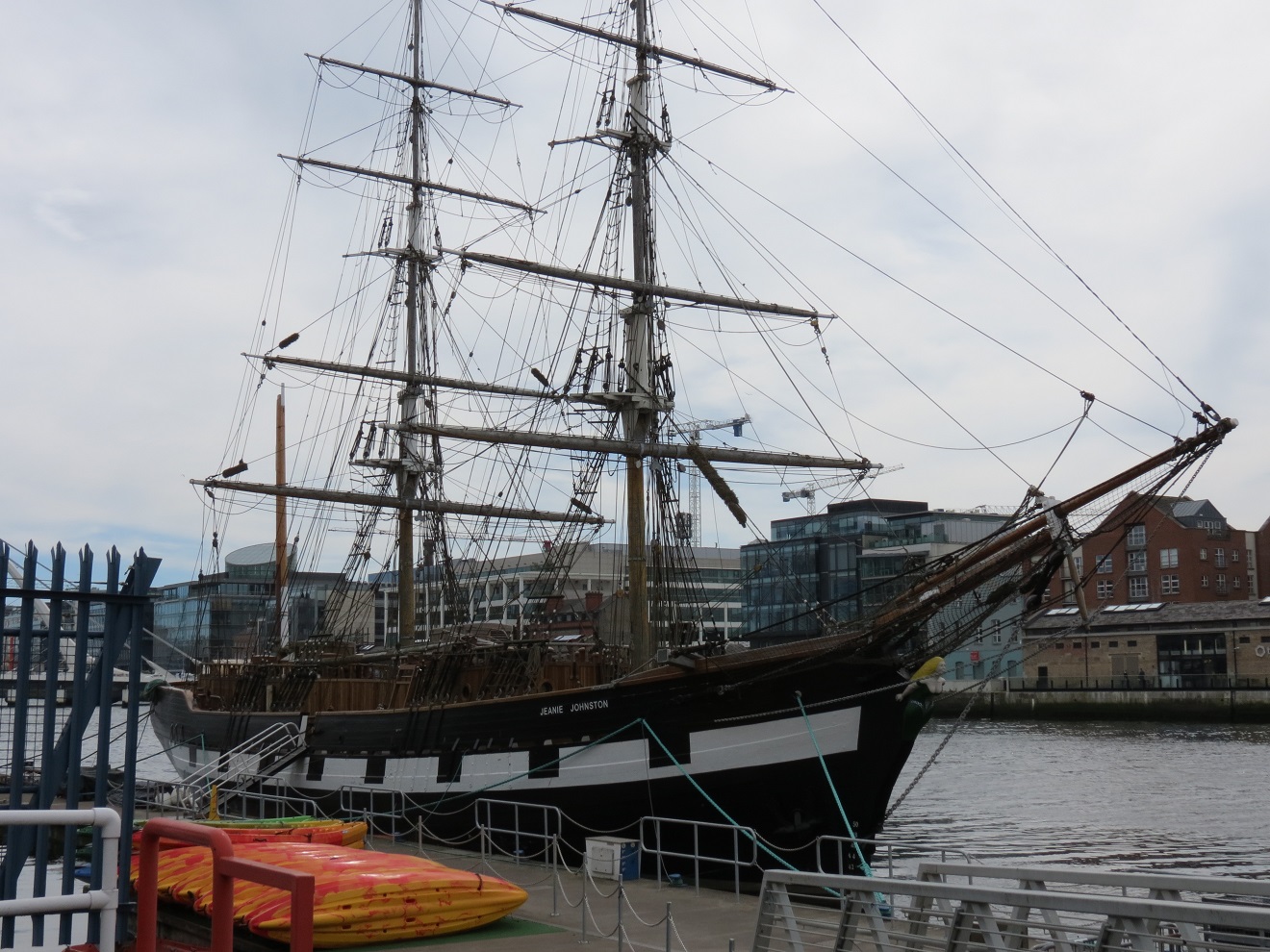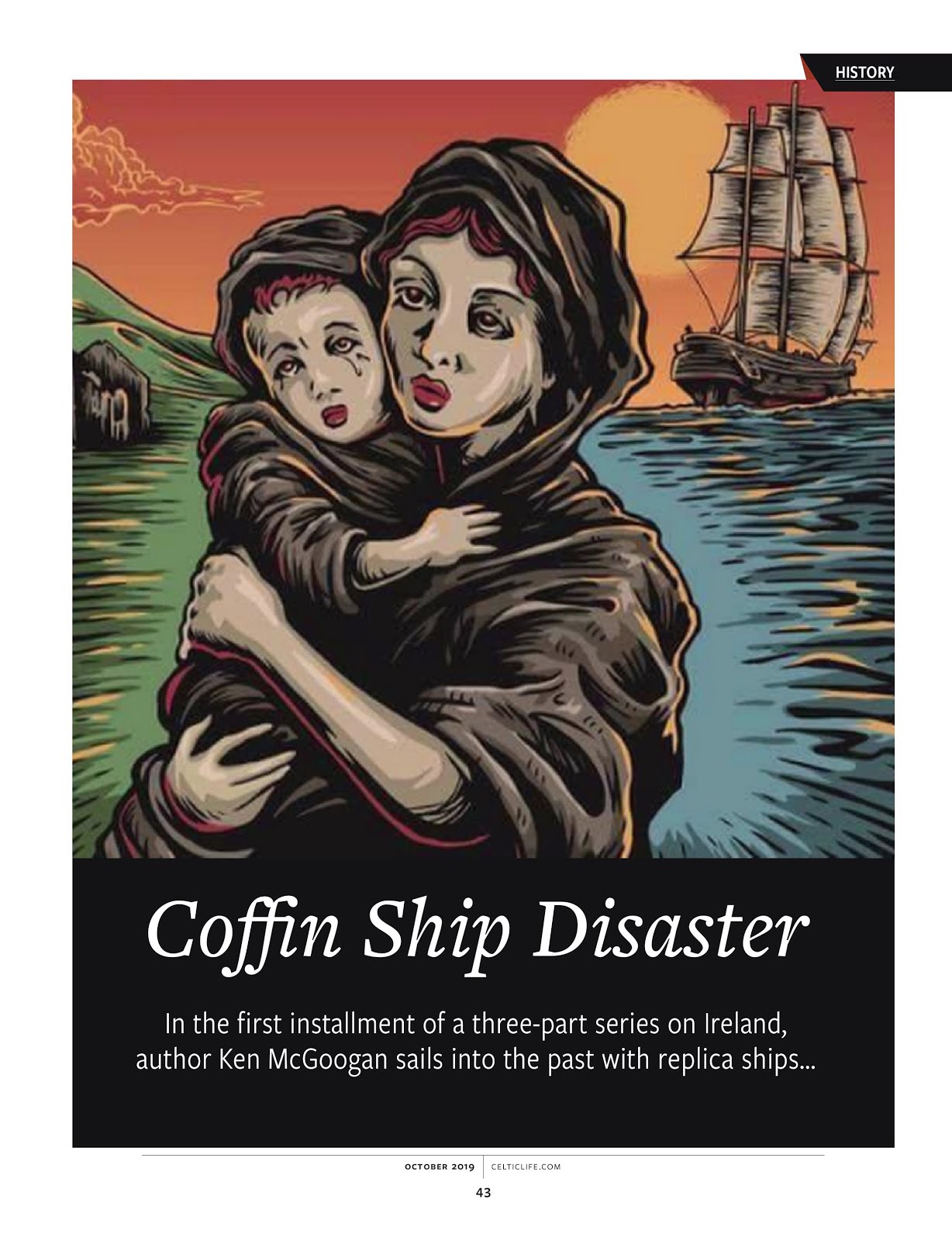Coffin Ships carried refugees to Canada
(The October issue of Celtic Life International finds our hero writing of the Coffin Ships that brought famine victims to North America.)
Last June, scientists confirmed the identification of the
human remains found on the beach at Cap des Rosiers, Quebec. They had come from
the 1847 shipwreck of the Carricks of Whitehaven, a famine ship that had sailed
from Sligo on the west coast of Ireland. Bound for Quebec City, the two-masted vessel
had been approaching the mouth of the St. Lawrence when on April 28 a fierce storm
came up, drove the wooden ship onto a shoal, and smashed her to pieces.
Now, more than 200 years later, Parks Canada anthropologists
confirmed that the remains – bones and skeletons uncovered by storms mostly in
2011 and 2016 – were indeed those of Irish men, women and children who had
sailed on the Carricks during the Great Famine in its worst year.
As I tracked the story from my home in Toronto, I
could imagine the terrible demise of those last survivors all too vividly. Less
than one month before the story surfaced, I had gone aboard two replica famine
ships in Ireland – the Jeanie Johnston in Dublin and the Dunbrody in New Ross,
County Wexford. And in 2018, in Pictou, Nova Scotia, I had explored the replica
of the Hector, which famously sailed from Scotland in 1773, decades before the
term “coffin ship” was coined. In size and weight, the 200-ton Hector was
closest to the 242-ton Carricks.
At 301 tons or more, the three-masted Jeanie Johnston
was significantly larger. On deck, the JJ was 123 feet long and 26 wide and it
had a draught or pass-over depth of 15 feet. The original ship, built in Quebec
in 1847, had two diesel engines in addition to sails. But according to tour
guide Sean Gilmore, the vessel was dead slow: “Once, in a race with 65 other
ships, it placed 60th.”
 Between 1848 and 1855, the Jeanie Johnston made 16
Between 1848 and 1855, the Jeanie Johnston made 16
voyages to North America, carrying an average of 198 passengers and as many as
254 passengers. Was it crowded? Put it this way: the replica ship is licensed
to carry 40 people, including crew. The vessel’s great distinction, Gilmore
said, was that, “On the Jeanie Johnston, nobody ever died.” This he attributed
to the skill of the doctor on board. The two main killers on these voyages, he
explained, were cholera and typhus. Cholera was transmitted by fecal matter in
the water: “If you got it, you were dead within 48 hours.” Typhus brought a
slower death, more miserable, and was carried by lice-infected rats.
The Jeanie Johnston went down in October 1858 when,
crossing the Atlantic with a cargo of timber, she became waterlogged. The crew
climbed into the rigging and hung on as the ship slowly sank. On the ninth day,
as things grew desperate – “no fresh water “– a Dutch ship happened by and rescued
all hands. “Why were they saved?” Gilmore asked rhetorically. “Because no one
ever died on the Jeanie Johnston.”
The same cannot be said of the Dunbrody, the largest
of the three replica ships I visited. Built in Quebec as a cargo vessel in
1845, it was 176 feet long, 28 wide, and weighed 500 tons – more than twice the
Carricks. Sailing out of New Ross during the famine years, the Dunbrody carried
an average of 200 passengers, though in March 1847, it sailed to Manhattan with
313. . . .
Steamers operating out of Liverpool could reach North
America in two weeks. But these sailing vessels usually required six to eight
weeks, during which passengers survived on oatmeal, rice and ship biscuit or
hard tack. Two small cabins on the Dunbrody gave first-class voyagers some
privacy but most passengers were crammed into 40 bunk beds that were six feet
square and made to accommodate four to eight people each. . . .
The vessel nearest in size to the Carricks of
Whitehaven was the older ship Hector, best known for its 1773 voyage from
Scotland to Pictou, Nova Scotia, where today a replica is tied up at Heritage
Quay. The original was already in rough shape when she collected passengers at Loch
Broom, and those who went aboard found they could scrape slivers from her
rotting hull with their fingernails. The Hector
had three masts but was just 85 feet long and 22 wide. She weighed 200 tons. She sailed with 189 passengers — 23 families
and 25 single men. To say that the ship was overflowing is a gross
understatement.
In 2018, while visiting the replica, I
descended the ladder into the hold and stepped to the middle of the ship where,
at just over six feet in height, I could at least stand upright. I could hardly believe my eyes. What with the
captain, the two mates, the sail maker, the carpenter, the cook, several seamen
and three soldiers, 200 people were crowded onto this ship. Most of them spent the
voyage confined here below decks, jammed tight. Men, women, and children – 30
of them under two years of age – slept on rough pine boards with twenty-four
inches between each rack. Eighteen people died during the 1773 crossing, most
of them children. . . .
(To read the complete article, pick up the October issue of Celtic Life International. To read more about sailing on the Hector, check out Flight of the Highlanders: The Making of Canada, publishing in September.)
